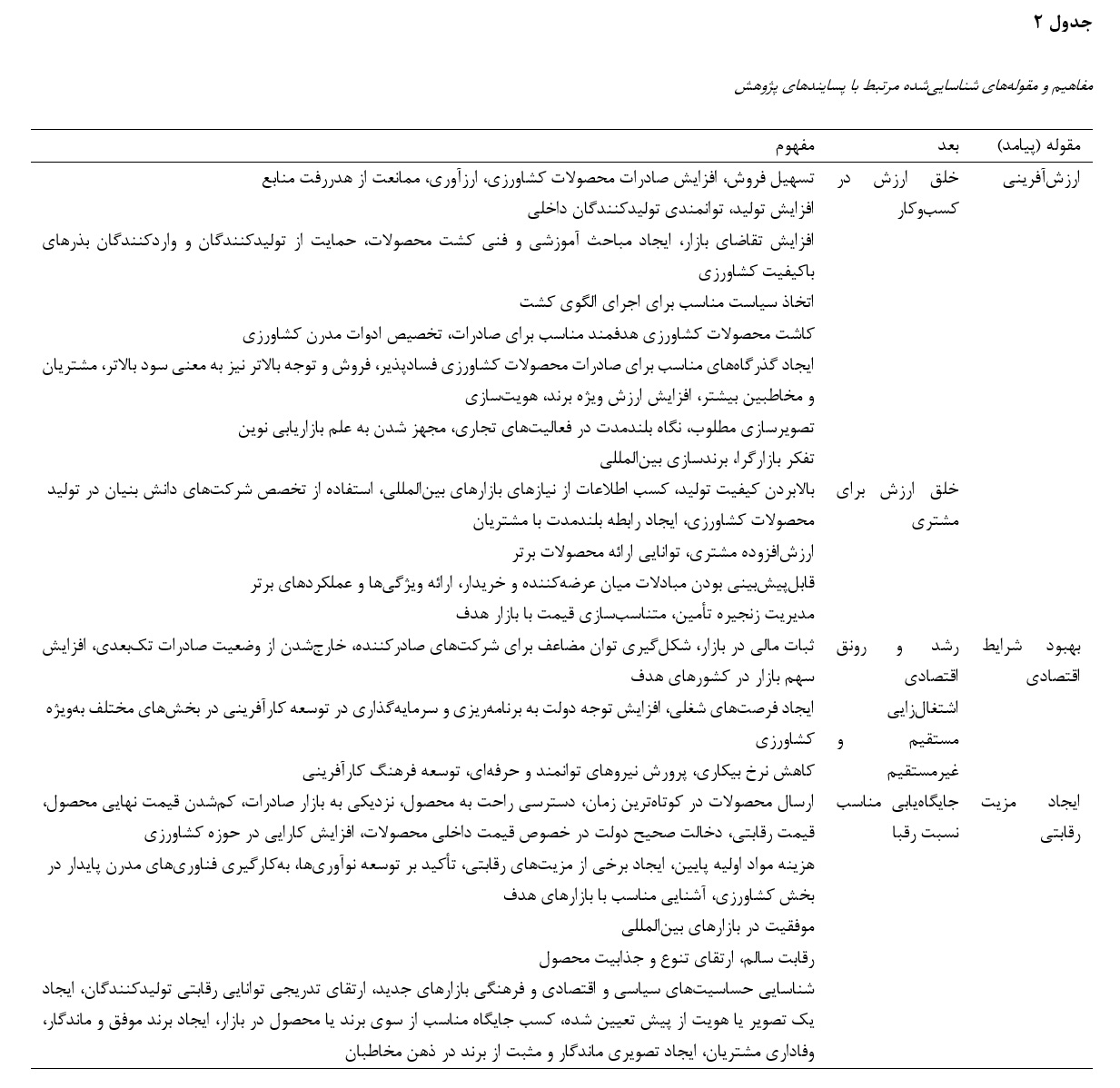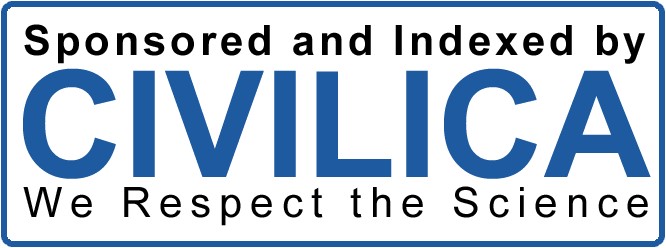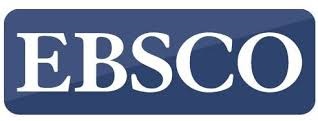Identification of Antecedents and Consequences of Government Support Bundling with a Competitive Advantage Approach for Agricultural Product Exporters in Khuzestan Province
Keywords:
Government support bundling, Competitive advantage, Export, Agricultural productsAbstract
The purpose of this research was to identify the antecedents and consequences of bundling government support with a competitive advantage approach for agricultural product exporting companies in Khuzestan Province. This research is applied in terms of its objective and qualitative in terms of data collection methodology, employing a thematic analysis approach. The participants in this study included experts from agricultural product exporting companies in Khuzestan Province with a minimum of 10 years of export experience. The required data were collected through semi-structured interviews until theoretical saturation was achieved. After the phase of theme search (selective coding) and the formation of sub-themes, a total of five main themes were identified, derived from semi-structured interviews with 16 experts and knowledgeable specialists in the research field. Two of these dimensions pertain to antecedents: managerial performance (management performance in export support, positive managerial mental models) and agricultural industry infrastructural factors (agricultural industry infrastructure, Khuzestan market dynamics, and transportation fleet). The three dimensions related to consequences include value creation (creating value in business, creating value for customers), economic condition improvement (economic growth and prosperity, direct and indirect job creation), and competitive advantage creation (appropriate positioning relative to competitors). The presence of effective government support bundling in the export of agricultural products in Khuzestan Province creates a competitive advantage over other competitors in terms of quality, appearance, product delivery methods, and so on, leading to increased exports, revenue growth, and increased employment in this sector.
Downloads
References
Aboui Ardakan, M., Labafi, S., Azarpour, S., & Jalalpour, M. (2013). Identifying the critical success factors of strategic
thinking in the view of managers of cultural organizations in Isfahan city. Research Journal of Executive
Management, 6(11), 1-1. https://smt.isu.ac.ir/article_1870.html?lang=en
Aquilante, T., & Vendrell-Herrero, F. (2021). Bundling and exporting: Evidence from German SMEs. Journal of
Business Research, 132, 32-44. https://doi.org/10.1016/j.jbusres.2021.03.059
Cao, Q., Tang, Y., Perera, S., & Zhang, J. (2022). Manufacturer- versus retailer-initiated bundling: Implications for the
supply chain. Transportation Research Part E: Logistics and Transportation Review, 157, 102552.
https://doi.org/10.1016/j.tre.2021.102552
Dadashi Jokandan, A., Hosseini, M. H., Ghaffari, R., & Doostar, M. (2023). Interpretive Structural Model (ISM) for
Factors Affecting the Development of The Export of Dairy Products. International Journal of Agricultural
Management and Development (IJAMAD), 13(1), 29-47. https://ageconsearch.umn.edu/record/342859/
De Cornière, A., & Taylor, G. (2017). Application bundling in system markets.
https://papers.ssrn.com/sol3/papers.cfm?abstract_id=2999658
Dertwinkel-Kalt, M., & Wey, C. (2020). Multi-product bargaining, bundling, and buyer power. Economics Letters, 188,
https://doi.org/10.1016/j.econlet.2019.108936
Dominique-Ferreira, S., & Antunes, C. (2020). Estimating the price range and the effect of price bundling strategies.
European Journal of Management and Business Economics, 29(2), 166-181. https://doi.org/10.1108/EJMBE-04-
-0066
Eivazinezhad, S., & Akbari, M. (2021). Designing a Perceived Risk Model for Buyers of Unknown Brand Products on
Instagram Social Network: Based on the Grounded Theory. Quarterly Journal of Brand Management, 8(1), 109-
https://bmr.alzahra.ac.ir/article_5818_en.html
Huang, Y.-S., Ho, J.-W., & Wu, G.-J. (2022). A study on promotion with strategic two-stage customized bundling.
Journal of Retailing and Consumer Services, 68, 103004. https://doi.org/10.1016/j.jretconser.2022.103004
Jashari, S., & Esfandiari, M. (2022). Development of macro strategies for the development of agricultural exports with a
futures research approach. Strategic Studies of public policy, 12(42), 100-116.
e44e66011a.pdf?lang=en
Leonidou, L. C. (2004). An Analysis of the Barriers Hindering Small Business Export Development. Journal of Small
Business Management, 42(3), 279-302. https://doi.org/10.1111/j.1540-627X.2004.00112.x
Njinyah, S. Z. (2018). The effectiveness of government policies for export promotion on the export performance of SMEs
Cocoa exporters in Cameroon. International Marketing Review, 35(1), 164-185. https://doi.org/10.1108/IMR-05-
-0103
Plananska, J., & Gamma, K. (2022). Product bundling for accelerating electric vehicle adoption: A mixed-method
empirical analysis of Swiss customers. Renewable and Sustainable Energy Reviews, 154, 111760.
https://doi.org/10.1016/j.rser.2021.111760
Shahbazi, H., Shakibania, B., & Abbasifar, A. (2018). Assessing the Effects of Government Incentive Programs on
Export Performance. Journal of Business Administration Researches, 10(19), 19-38.

Downloads
Published
Submitted
Revised
Accepted
Issue
Section
License
Copyright (c) 2024 Journal of Technology in Entrepreneurship and Strategic Management (JTESM)

This work is licensed under a Creative Commons Attribution-NonCommercial 4.0 International License.










